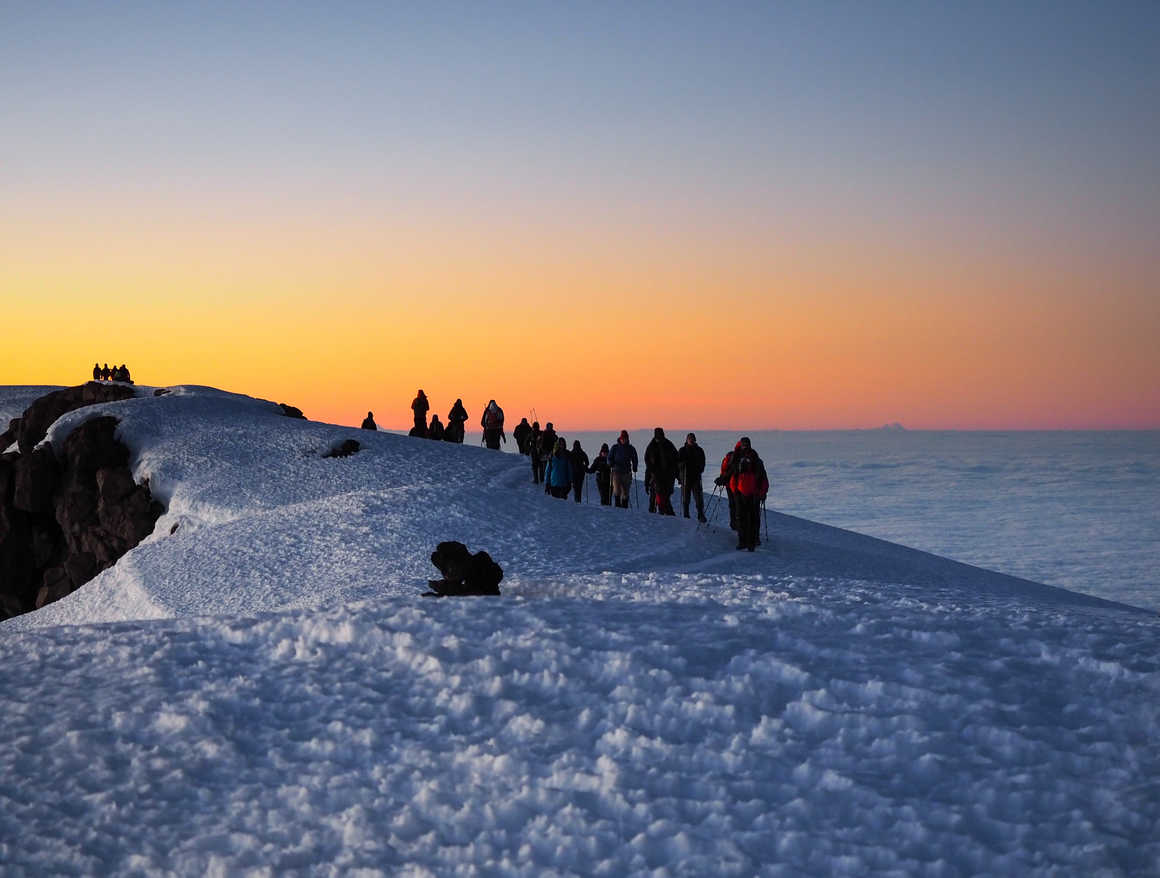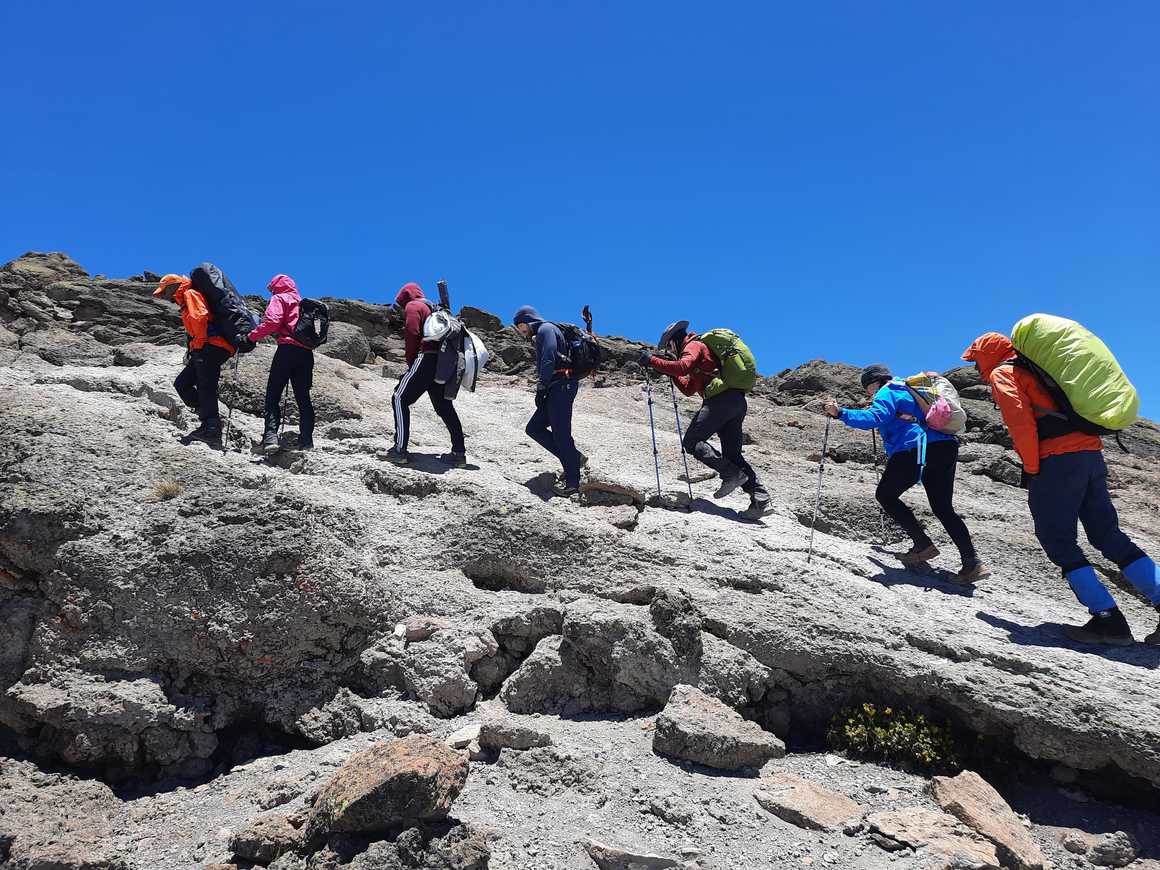Kilimanjaro Daypack Checklist
As the route to the summit ascends through 5 different
ecological climates, even experienced trekkers may be a little stuck when it
comes to what gear you need to climb Kilimanjaro. To put it simply, each
trekker on Kilimanjaro will have two bags – a duffle bag and a daypack. Your
duffle bag will be carried by your porters whereas your daypack will be caried
by yourself.
To help you gather everything you need for your trip to Kilimanjaro,
we’ve put together a list of essentials for your Kilimanjaro daypack as well as
some optional extras you might want when you’re on the mountain. For more
information on the other bits of gear you’ll need for Kilimanjaro, check out
our complete Kilimanjaro packing list.
Let’s get you ready for the trek!
What size daypack do you need for Kilimanjaro?
As well as size and capacity you should look for a daypack
made from a durable material like rip-stop nylon or polyester. A durable
daypack can resist wear and tear, thereby protecting your essentials against
harsh weather conditions. The best daypack for Kilimanjaro is one with lots of
compartments for easy access and an ergonomic design that can increase your
comfort during the climb.

What should you put in your daypack for Kilimanjaro?
Here’s a list we’ve put together including everything you
need to pack in your Kilimanjaro backpack as well as some optional extras:
- Warm hat – a knitted or fleece hat is a must,
particularly for the cold summit night on Kilimanjaro.
- Sun hat – vital for keeping your head cool and
protecting your face from sunburn.
- Soft shell jacket or fleece – you will need a
good quality fleece or soft-shell jacket as your second layer for the colder
sections of the climb.
- Waterproof jacket – essential for protecting you
against any wind or rain while on the mountain.
- Gloves – you will need a pair of lightweight,
fleece or quick drying fabric gloves and a pair of heavy weight, insulated,
water resistant gloves
- Waterproof trousers – though it’s true that you
may spend days on the mountain without seeing any rain, when it does, you’ll be
glad you carried a pair of waterproof trousers.
- Water – you need to stay well hydrated and
should drink between 2-3 litres of water per day. At Kandoo Adventures, we ask
everyone to carry 3 litres of water every day either in a water bottle or
hydration bladder like the Platypus Hydration Bladder.
- Suncream and UV protection – at higher altitudes
the sun’s rays are intensified and even on a cloudy day they can penetrate
through and burn you. To avoid sunburn, you should apply SPF 30 or higher to
your nose, face and ears at least 30 minutes before going out into the sun and
reapply regularly, wear a wide-brimmed hat and UV-protective sunglasses.
- Snacks – as you’ll be burning an extra 2,000 or
more calories a day, it’s important to carry plenty of small snacks with you to
eat between meals. Chocolate, nuts and seeds, biscuits, savoury snacks and
boiled sweets are a good choice but avoid anything with honey or syrup as they
are likely to freeze solid above 5,000m.
- Hand sanitiser – since washing hands might not
be an option on the mountain.
- Personal medication and basic first aid kit – we
suggest taking paracetamol for headaches, Imodium for diarrhoea and an
appropriate antihistamine for vomiting or nausea. We would also strongly
recommend bringing some plasters and insect repellent.
- Phone, battery pack and charger – so your phone
doesn’t run out of juice while on the trail.
- Rain cover – to save your personal items getting
wet, you’ll need to bring a rain cover for your daypack.
Other stuff
- Buff or neck gaiter – not only will they protect
your neck from the freezing wind, but also from the blistering sun and they are
incredibly useful in dusty weather as it can be wrapped around your nose and
mouth for protection.
- Trekking poles – optional, but recommended for
the summit.
- Camera and spare batteries – with its incredible
scenery and views, bringing a camera is a must on any Kilimanjaro packing list
(the smaller the better).
- Pee bottle – a practical solution if you get
caught short and need a wee between camps. Check out Shewee and Peebol on
Amazon.
- Toilet paper – it’s a good idea to carry a roll
of toilet paper and some hygienic wet wipes to clean up with if the need to go
to the toilet between camps arises (make sure to pack some disposable plastic
bags to collect any waste and dispose of this at your next camp stop.)

How should I pack my daypack for Kilimanjaro?
Clothing accessories such as hats, gloves and neck gaiters
can be put into a stuff sack so you can easily locate them if the weather
requires it. When packing, consider comfort and convenience, ensuring the weight
is balanced. Heavier items, like water bottles, should be placed close to the
midpoint of your backpack to keep your centre of gravity in line with your
spine.
Lastly, be consistent as to where you store your items so
that you can easily find your items when needed. Start by laying out everything
in front of you so you can load your bag in an organised way. Pack heavier
items at the bottom of your backpack and think about the things you will need
to access frequently, placing these at the top of the bag.
The best daypacks for your Kilimanjaro trek:











